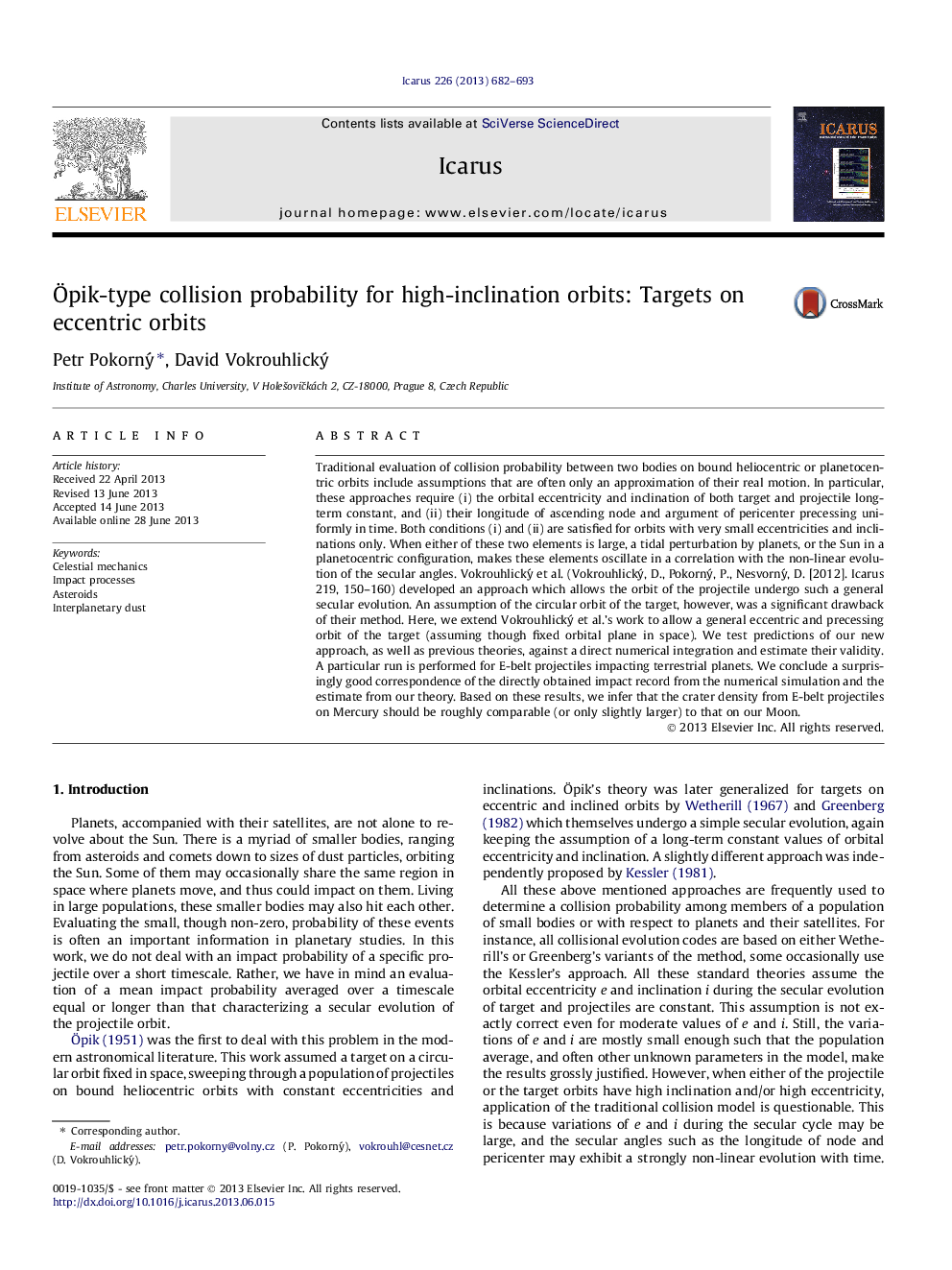| Article ID | Journal | Published Year | Pages | File Type |
|---|---|---|---|---|
| 10701334 | Icarus | 2013 | 12 Pages |
Abstract
Traditional evaluation of collision probability between two bodies on bound heliocentric or planetocentric orbits include assumptions that are often only an approximation of their real motion. In particular, these approaches require (i) the orbital eccentricity and inclination of both target and projectile long-term constant, and (ii) their longitude of ascending node and argument of pericenter precessing uniformly in time. Both conditions (i) and (ii) are satisfied for orbits with very small eccentricities and inclinations only. When either of these two elements is large, a tidal perturbation by planets, or the Sun in a planetocentric configuration, makes these elements oscillate in a correlation with the non-linear evolution of the secular angles. Vokrouhlický et al. (Vokrouhlický, D., Pokorný, P., Nesvorný, D. [2012]. Icarus 219, 150-160) developed an approach which allows the orbit of the projectile undergo such a general secular evolution. An assumption of the circular orbit of the target, however, was a significant drawback of their method. Here, we extend Vokrouhlický et al.'s work to allow a general eccentric and precessing orbit of the target (assuming though fixed orbital plane in space). We test predictions of our new approach, as well as previous theories, against a direct numerical integration and estimate their validity. A particular run is performed for E-belt projectiles impacting terrestrial planets. We conclude a surprisingly good correspondence of the directly obtained impact record from the numerical simulation and the estimate from our theory. Based on these results, we infer that the crater density from E-belt projectiles on Mercury should be roughly comparable (or only slightly larger) to that on our Moon.
Related Topics
Physical Sciences and Engineering
Earth and Planetary Sciences
Space and Planetary Science
Authors
Petr Pokorný, David Vokrouhlický,
